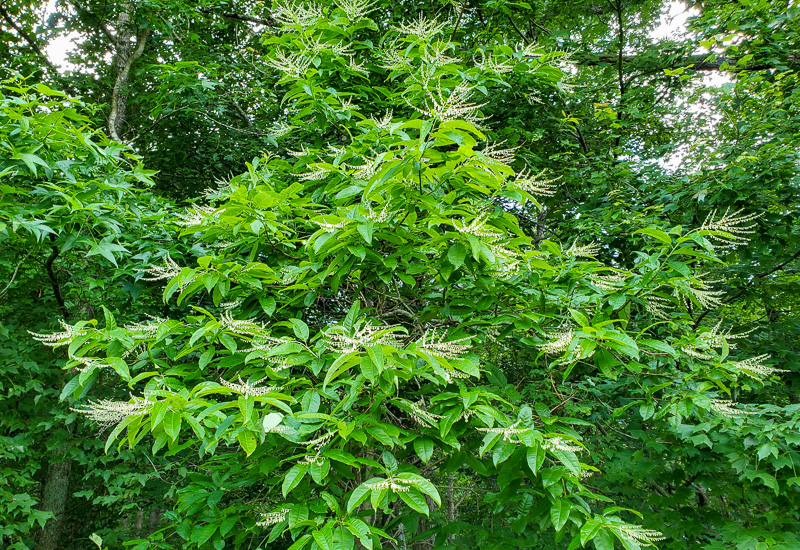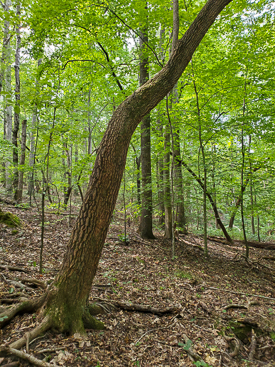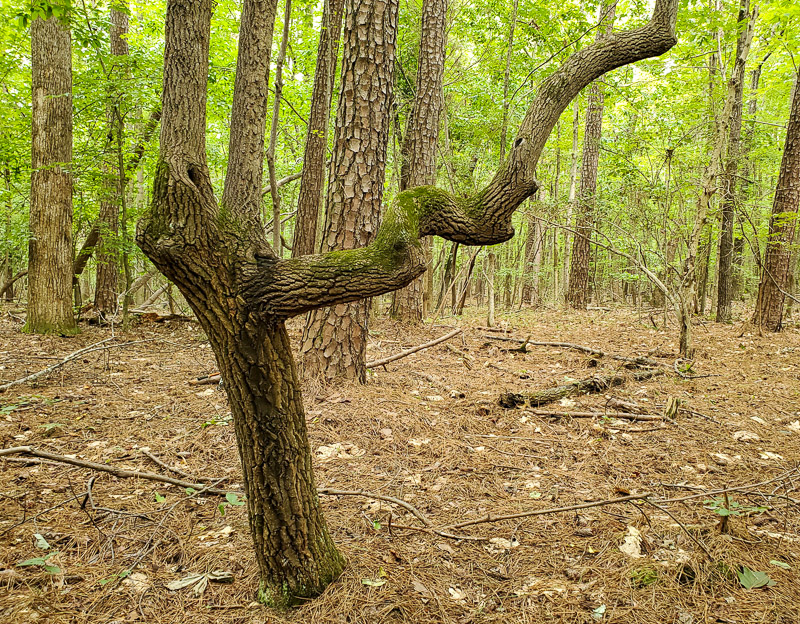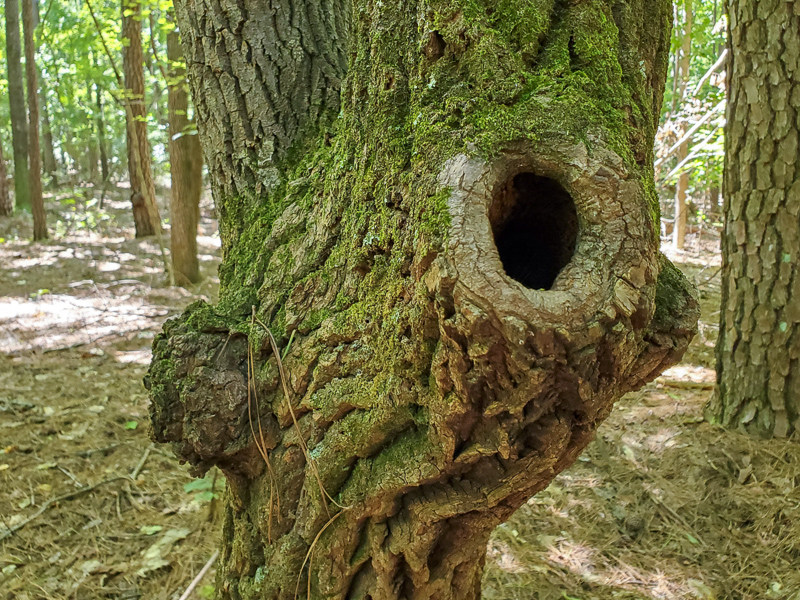Nature Now! Sweet on Sourwood
For immediate release ‐ September 17, 2020
Nature Now
Contact: Jon Pishney, 919.707.8083. Images available upon request

The sourwood (Oxydendrum arboreum) is one of my favorite trees in the hardwood forests of North Carolina. It is in the heath family (Ericaceae), which includes azaleas, rhododendrons, mountain laurel and blueberries. Sourwood trees are small when compared to the towering tulip trees, beeches, oaks and hickories that often overshadow them. Attaining heights of 30-50 feet, sourwood trees only reach into the mid-story of the forest canopy. With trunks usually no more than 12-15 inches in diameter, you might not have even noticed them during your forest saunters. The leaf contains oxalic acid, making it sour, not the wood. Sourleaf tree would have been a better name!
You might have noticed the showy sprays of creamy-white flowers against the green foliage in June or July, depending on your location and elevation. These flowers are favorites of many pollinators including honey bees, hence the popularity of sourwood honey at mountain roadside stands. The leaves turn a bright red in the fall, adding to the show of fall colors enjoyed by many in our deciduous forests.

For me, the sourwood tree stands out from the bigger trees of the forest for its non-conformist “attitude.” Sourwood trees rarely grow straight up like most trees. Instead they almost always have a noticeable lean in their posture. This lean is not necessarily the result of wind partially pushing the tree over at some time. It’s simply how the tree grows. Perhaps this helps place the tree’s leafy crown under the higher canopy of the larger trees, but still in a position to receive enough sunlight energy for photosynthesis. This strategy seems to be successful for the sourwood as they are relatively common, particularly on moist slopes of mixed hardwood forests. The natural lean of the sourwood, along with a relatively shallow root system, does make them more susceptible to falling over completely if pushed too hard by wind. I see many old sourwood trees completely prone on the ground, some still alive and some mere skeletons of a life once lived. I see others that would have fallen to the ground if not for the helping “hand” from the trunk of one of its more upright neighbors. (Giving a new meaning for “lean on me”!)

My adoration for the sourwood does not rest solely on the fact that the trunk has a lean. The sourwood does not have true terminal buds. Lateral buds become the leader for each growth spurt and for each new growth season. This gives the twigs and branches a crooked or zigzag appearance. One of these branches will become the main trunk, so it’s rare for the leaning trunk not to have some noticeable kinks in its stretch up to the sky. The main trunk may fork into two or more leading trunks, each with its own unique crooked form. Sometimes the results will leave you scratching your head wondering, “how in the world did that tree end up looking like that?”
Next time you are in the woods and find one of the larger leaning sourwood trees, go wrap your arms — well okay, your hands — around the trunk. The cross section of a leaning sourwood is not round, it is oval or elliptical instead: the wood is thicker on the sides of the trunk leaning towards and away from the ground. This is a support issue for a leaning tree — it needs thicker/stronger wood to counter the pull of gravity. The larger the tree, the more pronounced the elliptical cross section is. A sourwood behind my house measures 11 inches in diameter across the thick side and only six inches in diameter measured across the skinny side!
All of this leads to individual sourwood trees unique in shape and form. I like to think of them as the “artists” of the woods, sometimes creating wild and crazy living sculptures with their non-conformist trunks. The final touch to this tree sculpture is the deeply furrowed bark on larger trees, imparting a rich finishing texture to the living sculpture. The trunks of larger sourwoods are often hollow and adorned with burrs and knotholes. Not only does this add to their unique look, it also provides homes and shelter for a variety of wildlife. Small mammals, birds, lizards, snakes, tree frogs and countless invertebrates may utilize these cavities and hollows for shelter or homes at some point.

So, yes, I am sweet on sourwoods! They add their own artistic flair to the tapestry of trees in our hardwood forests. Look for them next time you’re in the woods. They are easy to spot — just look for a small leaning tree that’s big in character!
By Jerry Reynolds, Head of Outreach
For more information about our upcoming activities, conservation news and ground-breaking research, follow @NaturalSciences on Instagram, Twitter and Facebook. Join the conversation with #visitNCMNS.

